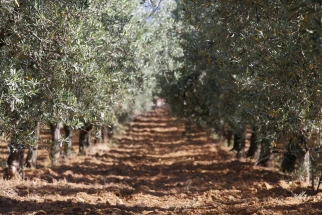.png&resolution=720x0&quality=95)
It's all about taking the time
Why artisanal pasta is just better
Pasta is probably the most famous ingredient in the Italian cuisine. But when we began our Mezzogiorno journey, it wasn't the thing we thought we could make a difference. Ooh, how little did we know... In the years leading up to Mezzogiorno we had evolved from awful Grand Italia to the much better La Molisana en De Cecco and the occasional home-made fresh experiment. But this was all before we discovered the artistry of artisanal, small scale dried pasta production in the South of Italy. There is just something about the chewiness of artisanal dried pasta that you can't get with any other pasta...
The Art of Pasta Production
Pasta production is a craft that involves the harmonious blending of simple ingredients: durum wheat semolina and water. The process, however, is where the magic happens. Artisanal pasta makers take pride in their meticulous approach, emphasizing quality over quantity.
Low-Temperature Drying:
One key factor that sets artisanal pasta apart is the use of low-temperature drying methods. Unlike the high-temperature drying processes employed by large-scale industrial producers, artisanal pasta makers prefer slow and gentle drying at low temperatures. This method preserves the natural flavors, textures, and nutritional value of the pasta.
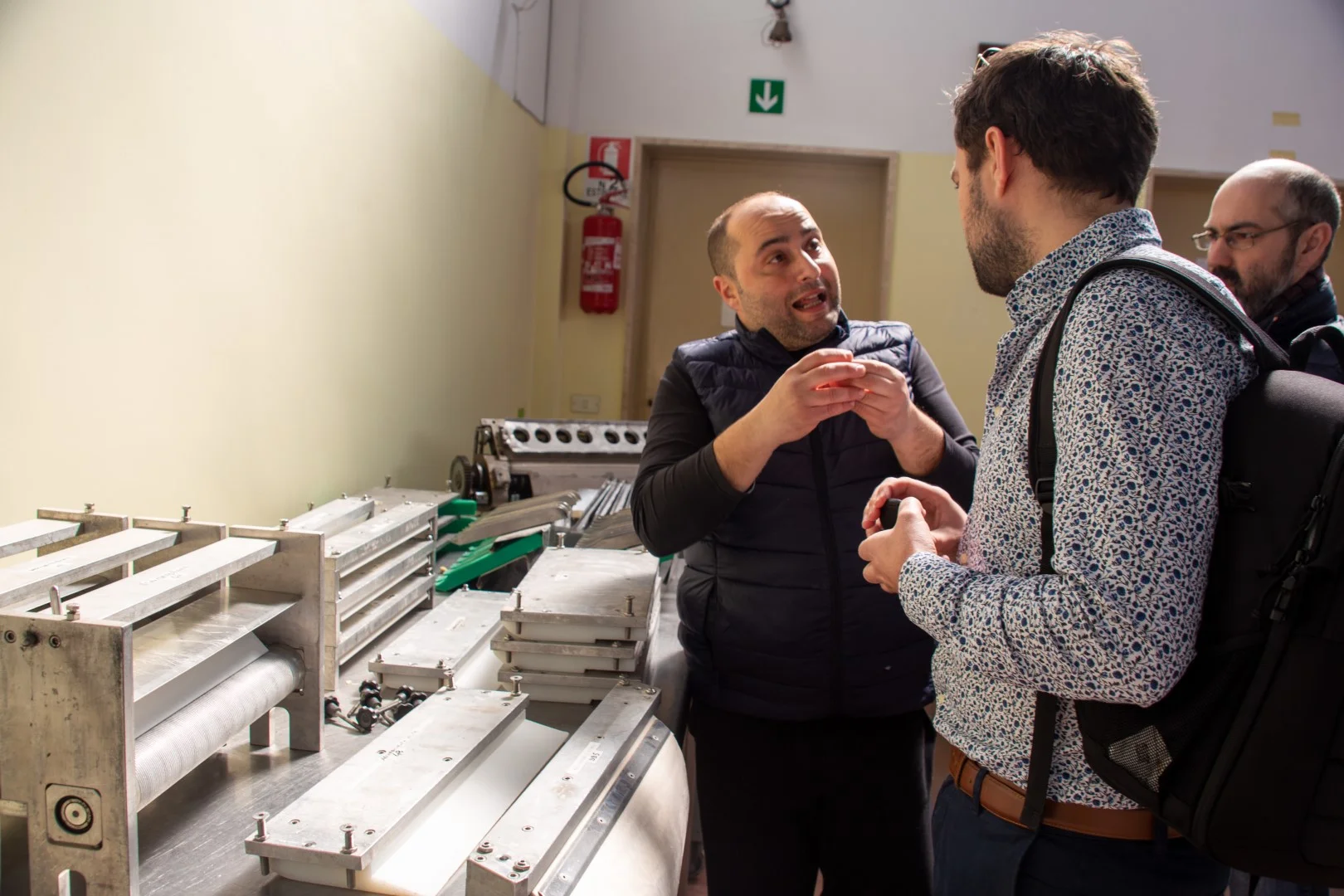
Preserving Nutrients
Low-temperature drying helps retain the nutritional content of the durum wheat, ensuring the final product is not only delicious but also healthful. Essential proteins, vitamins, and minerals are better preserved, offering a healthier alternative to mass-produced options.
Enhanced Flavor and Texture
The slow drying process allows the pasta to develop its flavors more fully. This results in a richer, more complex taste that is hard to achieve with high-temperature drying. Additionally, the texture of the pasta tends to be superior, providing a satisfying bite that stands out in dishes.
Reduced Oxidation
Low-temperature drying minimizes the oxidation of the wheat components, preventing the development of off-flavors and maintaining the pasta's natural light color. This attention to detail contributes to the overall quality of the final product.

So it's only about the drying?
Although, very important, the drying step is not the only thing that determines the quality of dried pasta. In addition to low-temperature drying, several other factors contribute to the exceptional quality of artisanal pasta. First and foremost is the use of high-quality durum wheat semolina, carefully selected for its flavor and nutritional profile. Artisanal pasta makers often prioritize sourcing locally and sustainably, ensuring the finest raw ingredients. The traditional bronze die-extrusion process, employed by many craft producers, gives the pasta a rough texture that helps sauces adhere, creating a more satisfying dining experience. These combined elements showcase the commitment of artisanal pasta makers to crafting a product that transcends factory-made pasta, rich in taste, texture, quality and tradition.
Tradition and Quality
In the world of pasta production, the slow and careful process of low-temperature drying distinguishes artisanal pasta makers from their industrial counterparts. The advantages of this traditional approach extend beyond the plate, touching on health, flavor, and sustainability. As consumers increasingly seek unique and high-quality products, the sudden rise in small-scale, artisanal pasta production is a testament to the increasing appreciation of culinary craftsmanship.
"A good pasta is essential for any pasta dish. I choose Mezzogiorno pasta because of its excellent taste, firm bite and good texture."
Joke L.
Eric from Mezzogiorno elaborates...
By trade, I'm an industrial engineer, which makes being in an artisanal pasta factory challenging for me. In almost every production step, one can see improvements from an efficiency point of view. Every time I see someone moving a tray with a few kilo's of pasta from one machine to the next my hands start itching. The pasta makers explain to me that this way they can control everything by themselvves, they're not interested in efficiency, sensors or increasing production. They want to do it right! And well, let's be honest, they are right...
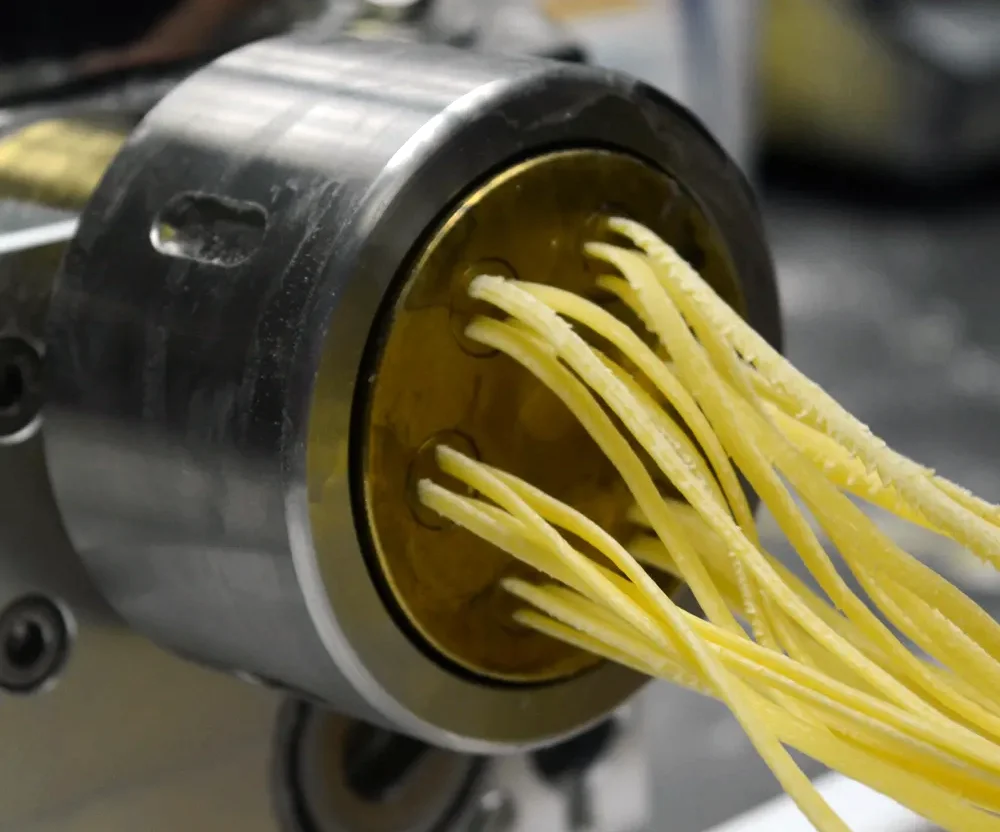
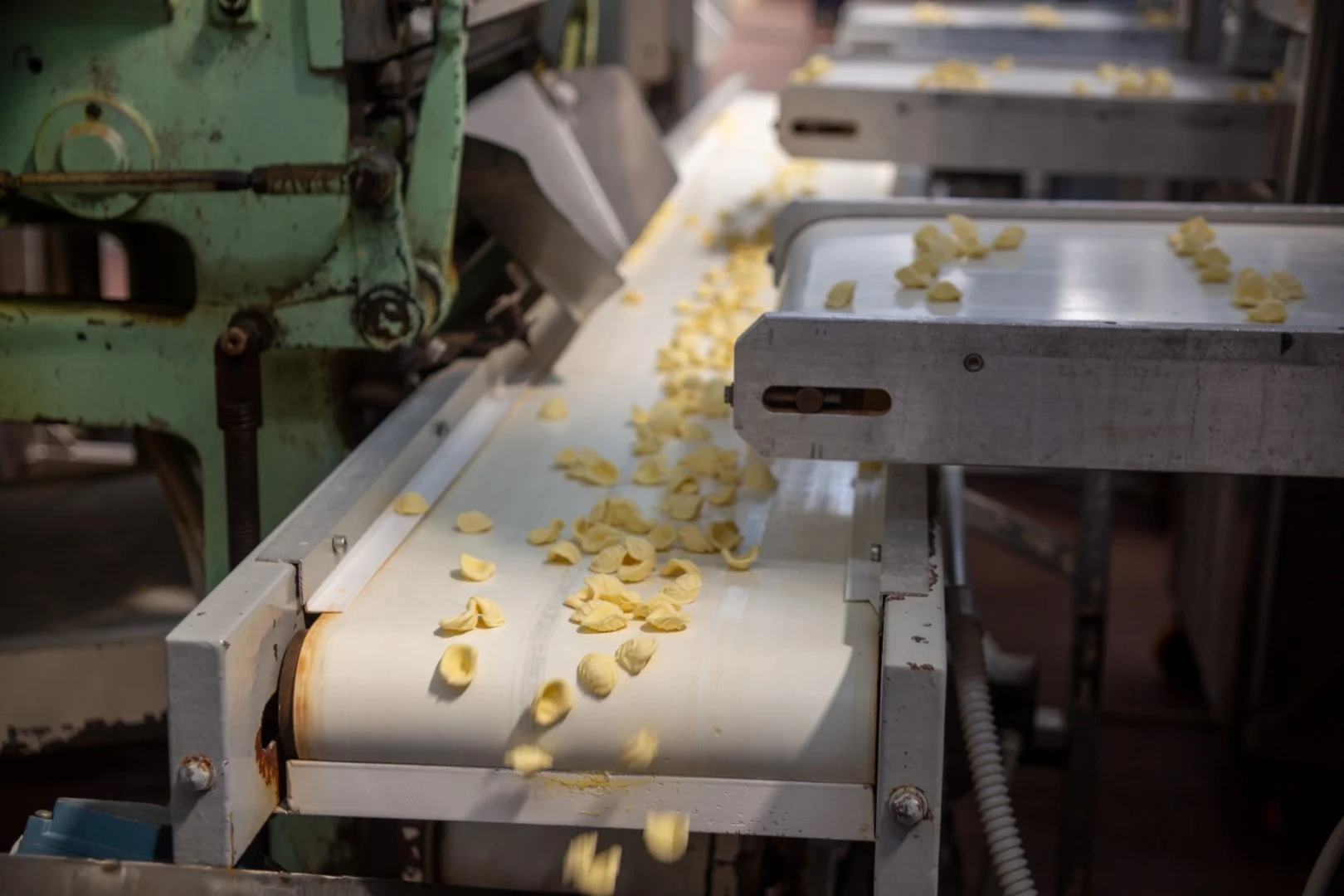
So how to recognize this pasta?
- Check the Color: High-quality pasta dried at low temperatures retains its natural, light color. Unlike pasta exposed to high heat, which may appear yellow or orange, look for noodles that maintain the authentic hue of durum wheat. This signals that the pasta has been carefully dried to preserve its natural goodness.
- Feel the Texture: Run your fingers over the surface of the pasta. Bronze die-extruded pasta results in a slightly rough texture, ideal for holding onto sauces. This characteristic texture is a sign of high quality production methods, as opposed to the smoother surface often found in mass-produced alternatives.
- Smell the Aroma: Take a moment to inhale the aroma of the pasta. High-quality pasta dried at low temperatures tends to have a more pronounced wheat fragrance. The slow drying process allows the flavors to develop, resulting in a richer and more nuanced aroma that will translate into a more flavorful dish.
- Inspect for Uniformity: Artisanal pasta makers take pride in the consistency of their product. Examine the noodles for uniform thickness and shape. While slight variations may be present, a high-quality pasta will generally exhibit a level of precision that reflects the artisan's attention to detail.
- Consider Cooking Time: Quality pasta, dried at low temperatures, often requires a slightly longer cooking time compared to its mass-produced counterparts. The extra time in the pot allows the flavors to fully blossom and the texture to reach its ideal state. Be patient, and you'll be rewarded with a pasta experience that transcends the ordinary.
Meet the Castellano's
The Castellano family has been cultivating durum wheat in the haeart of Sicily for generations. The island has been known as Italy’s breadbasket since Roman times. It is where the best durum wheat comes from. Grandfather Castellano was born on a typical Sicilian family farmhouse with a bit of everything: a little cattle, some vegetables and a little wheat. The next generation of Castellano’s bought more land to be able to grow more wheat, which was during that time mainly used for animal feed. The current generation, Elisa and her husband, have decided to start a small pasta factory to make their own wheat into pasta. Here, they produce a small amount of artisanal pasta in the traditional way.
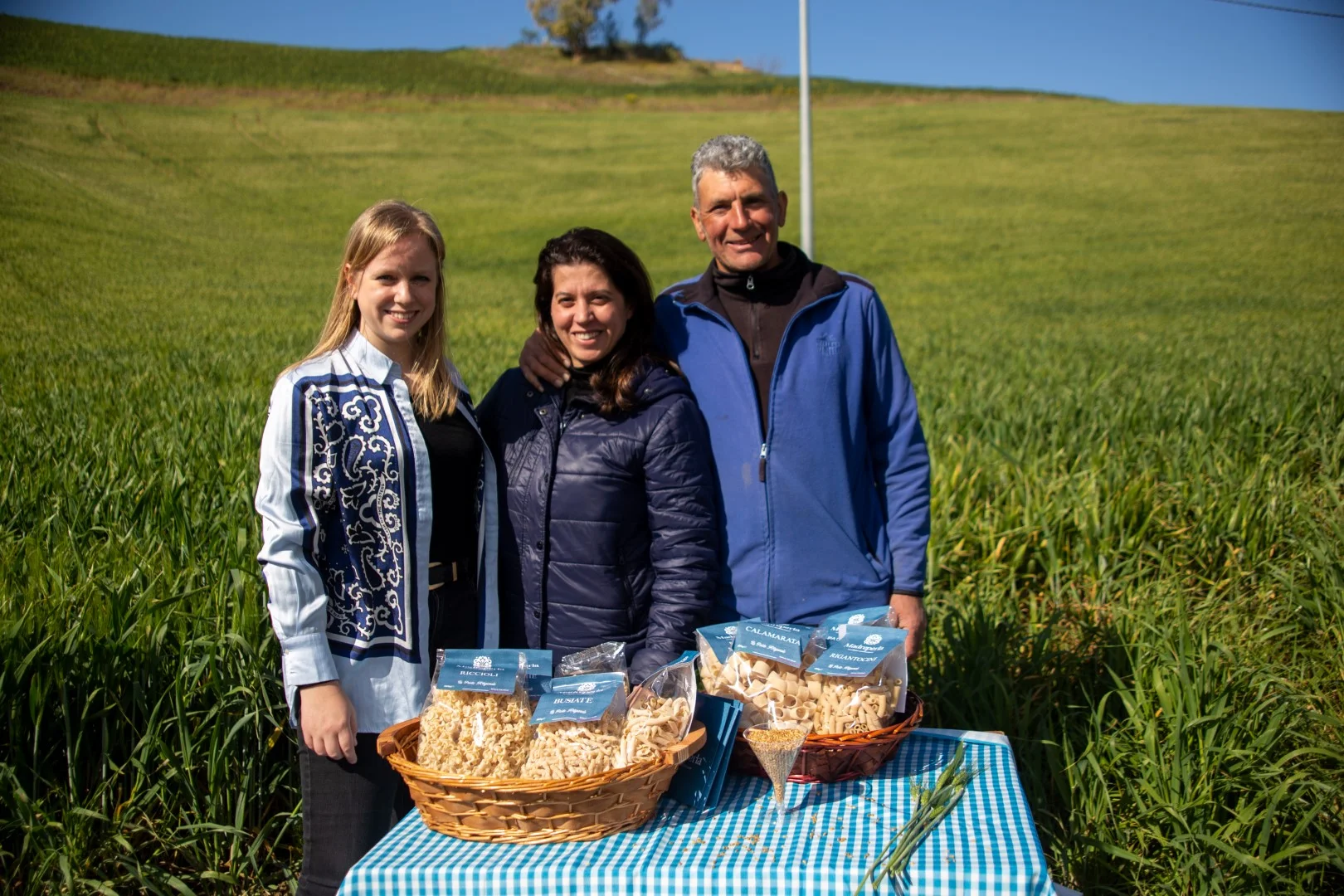
Meet the Caroli's
The Caroli family has a small pasta facility in Monopoli, Puglia. The Caroli family is specialized in the production of traditional Pugliese pasta shapes like Orecchiette that were originally made by the Nonna's of Bari with their famous Nonna knifes The Caroli's don't have enough Nonna's to continue like this but they have found another way. At Antica Masseria Caroli, they believe that true artistry lies in the details. They take pride in their small-scale production methods, allowing them to focus on every batch's quality. Every production step is visually controlled to ensure the highest possible quality. Their Orecchiette Condite is made with precision and passion, ensuring a taste that's simply unparalleled.



.jpg?resolution=1024x340&type=webp&quality=90)
.png?resolution=322x0&quality=90&type=webp&background=FFFFFFFF&force_jpg_crop=1)
.jpg?resolution=322x0&quality=90&type=webp&background=FFFFFFFF&force_jpg_crop=1)
